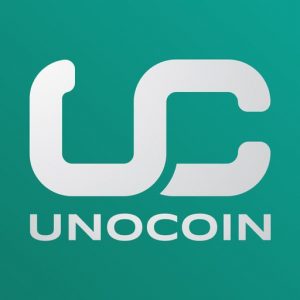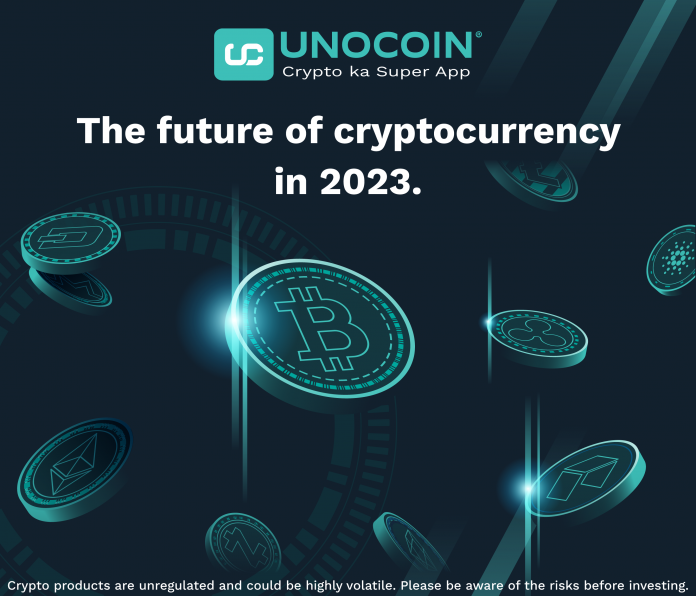The future of cryptocurrency in 2023
The future of cryptocurrency and blockchain technology is poised for significant growth and development in the coming years. With the advent of decentralized finance (DeFi) and non-fungible tokens (NFT), we are witnessing a new wave of innovation that is changing the way we think about money and digital assets. The future of cryptocurrency in India is a highly debated topic with varying opinions and predictions. India’s government and central bank have been cautious about full adoption of digital currencies, but the Supreme Court decision to lift the ban on cryptocurrency trading has reignited hopes for its adoption. Despite the regulatory ambiguity, demand for cryptocurrencies is growing rapidly in India, with Bitcoin and Ethereum being the most popular choices.In addition, the development of layer 2 solutions and privacy-focused cryptocurrencies further expands the potential of blockchain technology.
Decentralized Finance (DeFi)
Decentralized finance (DeFi) is a movement that aims to create more accessible, secure and transparent financial services using blockchain technology. DeFi applications such as decentralized exchanges, lending platforms and stablecoins operate on decentralized networks and are not governed by any central authority. This eliminates the need for intermediaries, reduces the risk of censorship, fraud and hackers, while giving users more control over their assets and data.
One example of a DeFi project is Aave, a decentralized lending platform that allows users to earn interest on their cryptocurrencies by lending them to borrowers. Aave uses blockchain technology to ensure that loans are transparent, secure and verifiable, and its decentralized nature ensures that users retain control of their assets. Additionally, Aave enables seamless cross-chain lending, meaning users can lend and borrow cryptocurrencies from different blockchains, further increasing its accessibility and growth potential.
Another example of a DeFi project is MakerDAO, a decentralized lending platform that uses the stablecoin DAI as collateral for loans. MakerDAO allows users to borrow DAI against their cryptocurrency, providing a safe and stable alternative to traditional lending. DAI is pegged to the value of the US dollar, making it a more stable and predictable investment compared to other cryptocurrencies. This makes MakerDAO an attractive option for both lenders and borrowers as it offers a way to participate in the cryptocurrency market without the volatility associated with other cryptocurrencies.
Non-Fungible Tokens (NFTs)
Non-Fungible Tokens (NFT) are unique digital assets that use blockchain technology to prove ownership and scarcity. Unlike fungible tokens such as cryptocurrencies, which are fungible and have a single value, NFTs are indivisible and have unique properties that make them unique and valuable. NFTs are used in a variety of industries, including art, collectibles, and gaming, and provide new opportunities for creators and collectors to monetize their digital creations.
One example of an NFT project is CryptoKitties, a blockchain-based game that allows players to collect, breed and trade virtual cats. CryptoKitties uses NFTs to prove ownership and scarcity, and its decentralized nature ensures that players actually own their kitties and can trade them on open markets. This has led to a vibrant community of players and collectors and created new opportunities for digital creators to monetize their work.
One more example of an NFT project is SuperRare, a curated marketplace for buying and selling unique digital art. SuperRare runs on the Ethereum blockchain and uses NFTs to ensure artwork is unique and verifiable. This allows artists to sell their work directly to collectors, bypassing middlemen and creating new opportunities for digital art to gain recognition and value.
Layer 2 solution
Layer 2 solutions are being developed to help scale blockchain networks and improve the speed and efficiency of transactions. Layer 2 solutions move some transactions off the main blockchain, reducing congestion and enabling faster and cheaper transactions. This is critical to the adoption of blockchain technology, as it makes it easier for developers to create and deploy decentralized applications and allows users to participate in decentralized networks.
Layer 2 solutions are being developed to help scale blockchain networks and make them more suitable for mainstream use. The goal of these solutions is to improve the speed and efficiency of blockchain transactions while maintaining their basic security and decentralization.
One example of a Layer 2 solution is Optimism, a platform that allows Ethereum-based decentralized applications (dapps) to scale and offer a better user experience by moving some of their transactions off-chain. Optimism uses a technique called “rollups” to combine many transactions into a single, larger transaction, which is then recorded on the Ethereum blockchain. This allows Optimism to offer fast and cheap transactions while still ensuring the security and transparency of the underlying blockchain.
Another example of a Layer 2 solution is Polygon (formerly known as Matic Network), which provides a Layer 2 scaling solution for Ethereum. Polygon enables faster and cheaper transactions by shifting some of the workload from the Ethereum blockchain to its own Layer 2 network. This helps reduce congestion and high gas fees on the Ethereum network, making it easier for developers to build and deploy decentralized applications.
Cryptocurrencies focused on privacy
Privacy-focused cryptocurrencies such as Monero and ZCash are gaining more attention because they offer greater anonymity and security in transactions compared to more widely used cryptocurrencies such as Bitcoin. These cryptocurrencies use advanced cryptography and privacy techniques to ensure that users can transact securely and privately on the blockchain.
Blockchain gaming
Blockchain technology is being used to create new gaming experiences that offer player ownership, digital scarcity and the ability to trade assets between games. This allows players to truly own their in-game items and take them with them as they move between different games, creating a more immersive and engaging gaming experience.
One example of a blockchain game is “CryptoKitties”. In this game, players can buy, sell, and breed unique virtual cats that are stored on the Ethereum blockchain. Each CryptoKitty is one-of-a-kind and has its own set of attributes, such as coat pattern and eye color, which are recorded on the blockchain. This allows players to own and trade their CryptoKitties just like other cryptocurrency assets. Another blockchain game is “Gods Unchained”, which is a collectible card game where players can buy, sell and trade cards in a decentralized market. These cards are stored on the Ethereum blockchain, allowing players to own and trade them like other crypto assets.
Please find the list of authentic Unocoin accounts for all your queries below:
- YouTube Channel: https://www.youtube.com/c/Unocoin/videos
- Newsletter: https://medium.com/subscribe/@Unocoin_growth
- Blogs: https://blog.unocoin.com
- Instagram: https://www.instagram.com/unocoin/
- Twitter: https://twitter.com/Unocoin
- Facebook: https://www.facebook.com/unocoin/
- LinkedIn: https://in.linkedin.com/company/unocoin
- Telegram Group: https://t.me/Unocoin_Group
- Telegram Channel: https://t.me/+fasQhTKBsfA5N2Zl
- Telegram: https://t.me/UnocoinSupport_Bot
- E-mail id: [email protected]
- Contact details: 7788978910 (09:30 AM IST – 06:30 PM, Mon – Sat)
- App store link: https://apps.apple.com/us/app/unocoin/id1030422972?ls=1
- Playstore link: https://play.google.com/store/apps/details?id=com.unocoin.unocoinwallet
Disclaimer: Crypto products are unregulated as of this date in India. They could be highly volatile. At Unocoin, we understand that there is a need to protect consumer interests as this form of trading and investment has risks that consumers may not be aware of. To ensure that consumers who deal in crypto products are not misled, they are advised to DYOR (Do Your Own Research).




